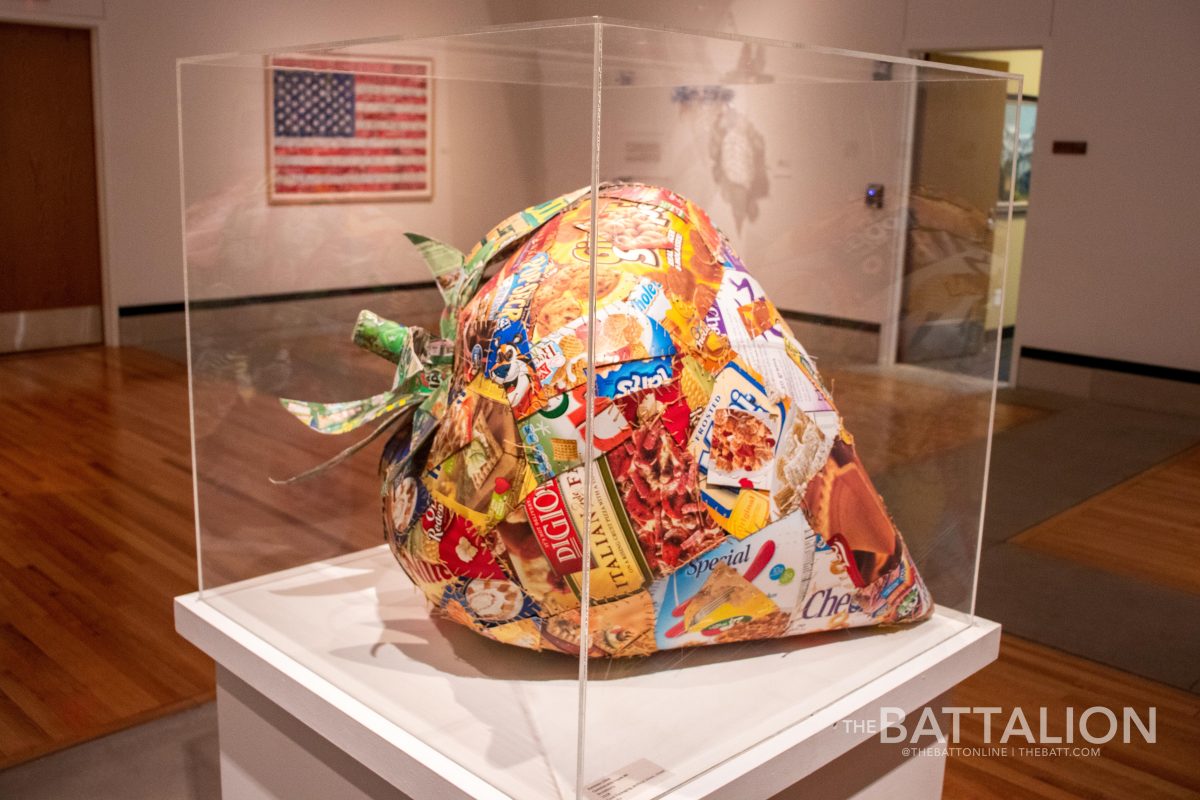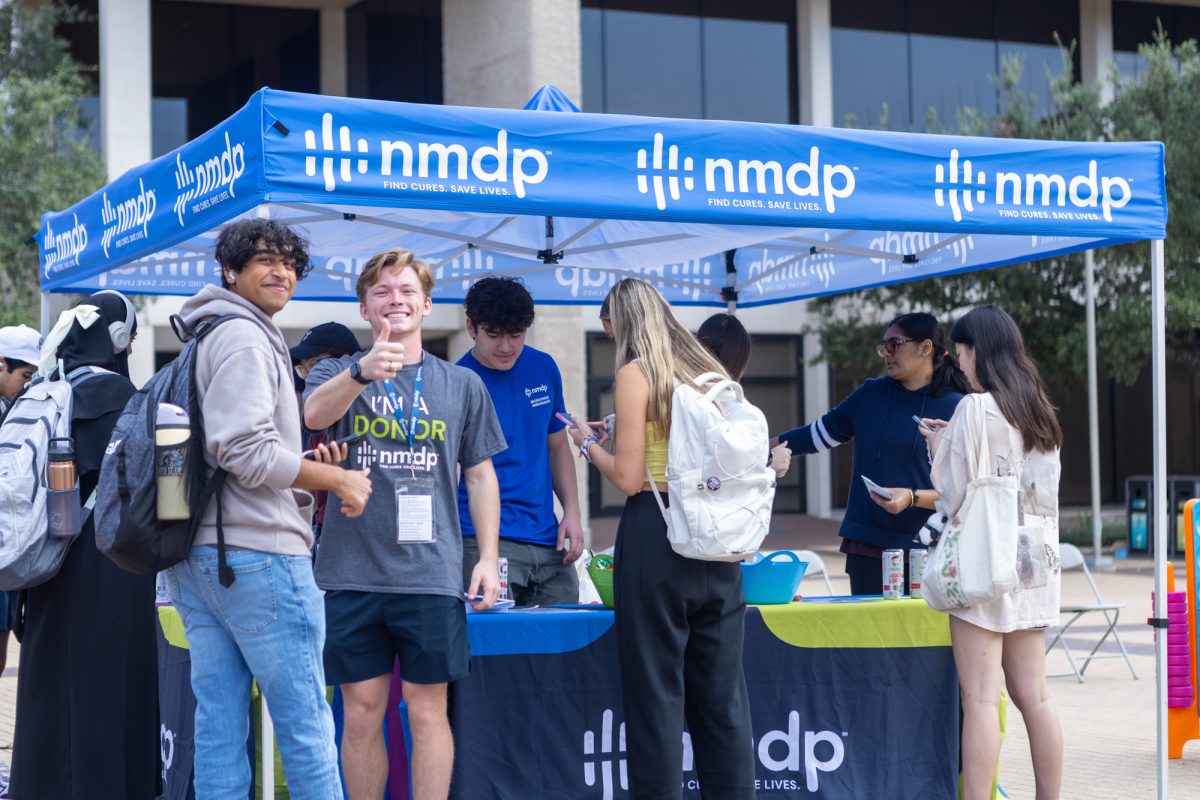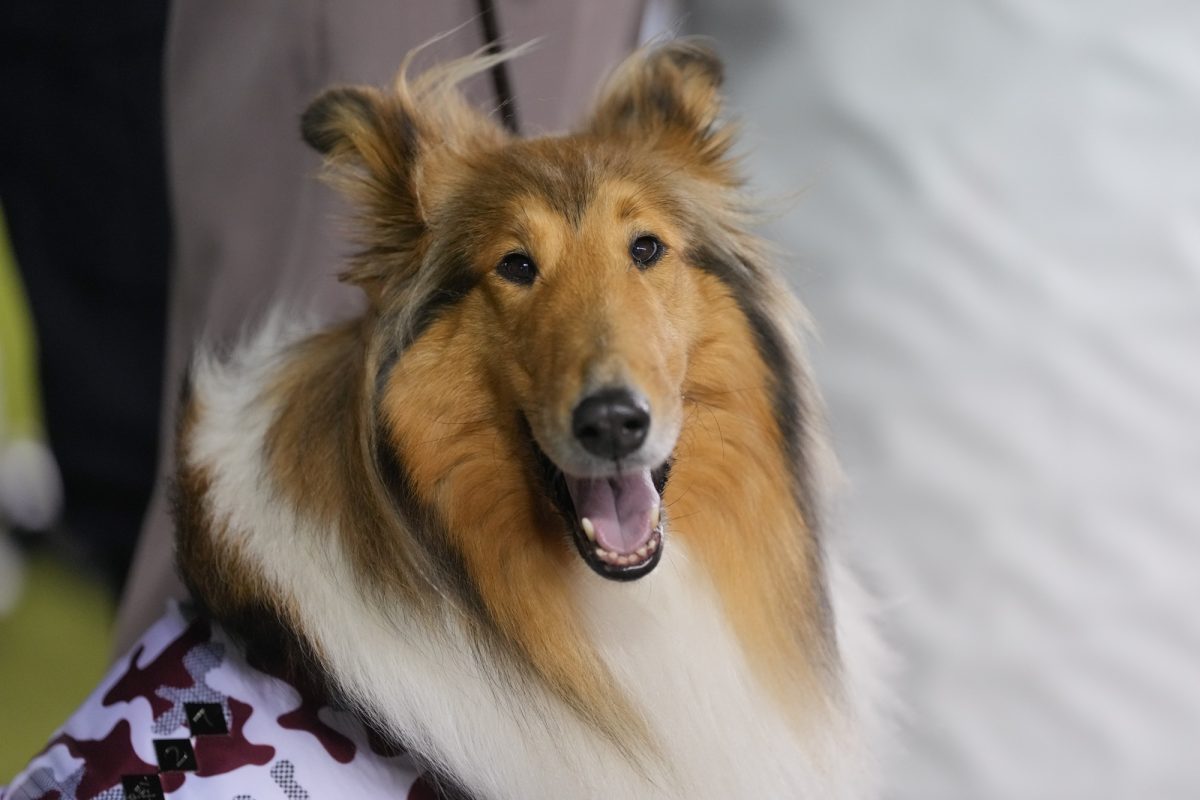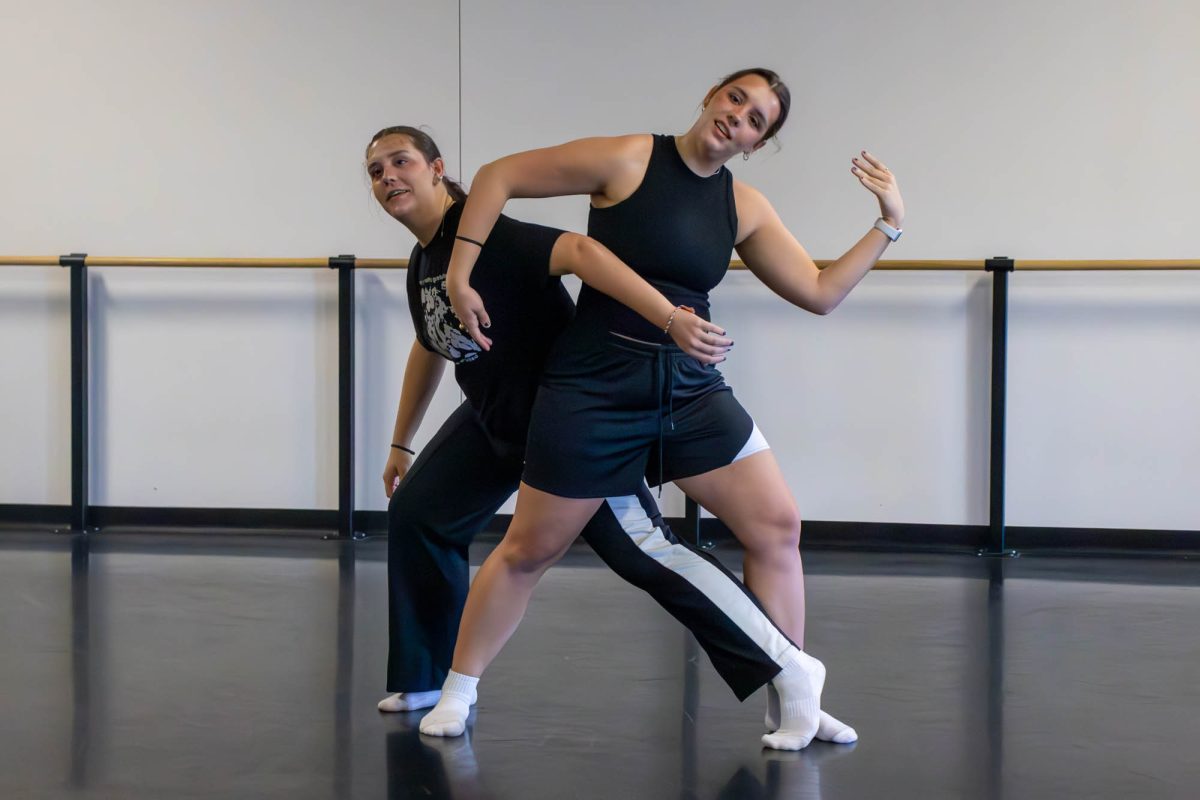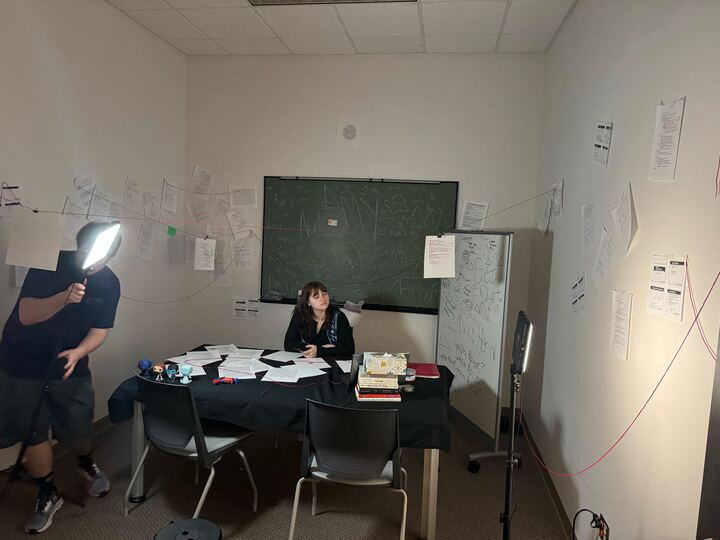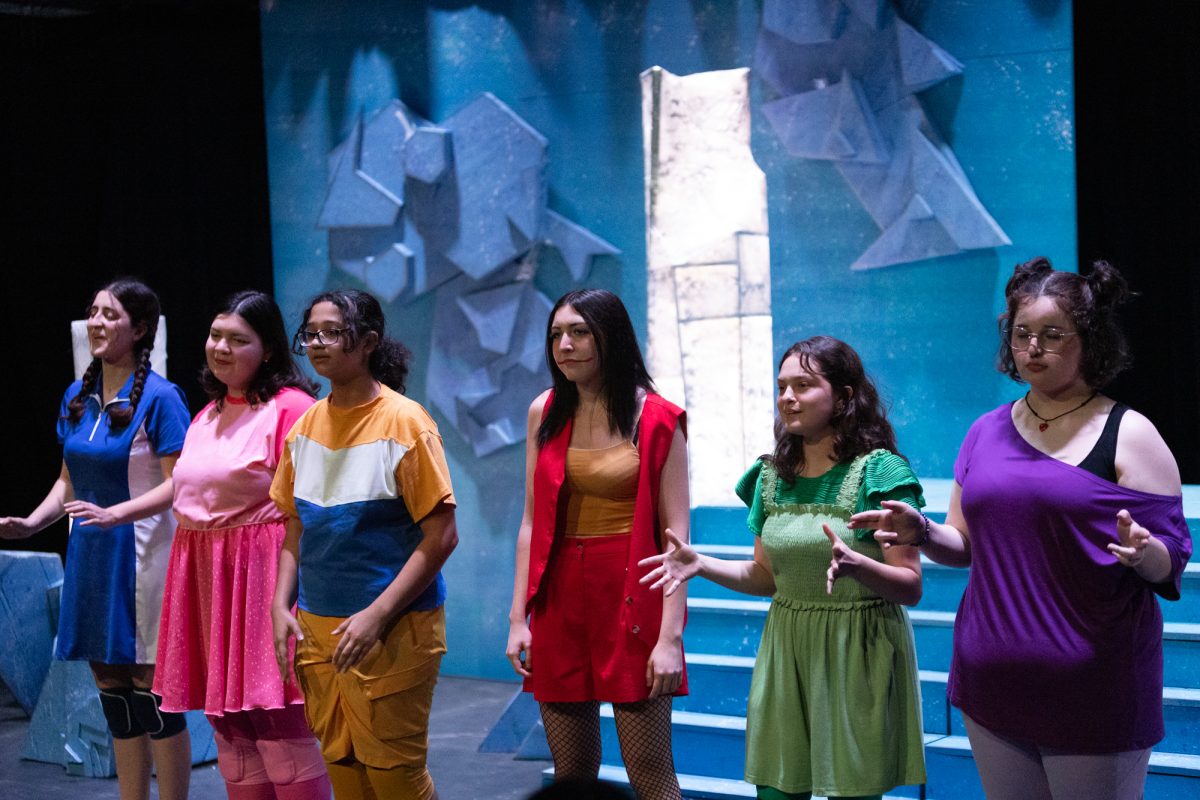Glasswork, collages made from food packaging, mixed media paintings and photographs line the walls of the J. Wayne Stark Galleries, encouraging visitors to become more aware of the impact their choices have on their bodies and others around them.
“Parallel Fields” is on display in MSC 1110 until Oct. 20. The free exhibit features artwork in various mediums by Kathleen Elliot, Kaethe Kauffman and Bobbie Moline-Kramer. Each artist focuses on an issue regarding the state of the human body.
Kauffman was inspired to create her muscle movement series of photographs by watching others in her yoga class and memorizing the poses she observed. She created her art by applying paint to a joint on herself or a model and moving the joint in every direction. Her interest in contemplative art also reflects her time spent meditating and focusing on grounding and centering herself as a Buddhist.
“I could see what the pose looked like, but I couldn’t see what the movement looked like,” Kauffman said. “That’s when I started applying wet paint to a joint because that’s where movement’s shown most. I see my work as positive and beautiful, but I understand some people in Western culture see them as scars, tattoos and bondage.”
Kauffman has exhibited her work in New York, California, Washington, D.C., Australia and Prague. She said she enjoys showing her work at universities to challenge students to become more aware of the impact they have.
“I’m very proud and honored to be exhibiting with the other artists,” Kauffman said. “I love to show at universities. I’ve spent most of my life actually as a university student or professor. I love that environment. I believe in it.”
Elliot created her series of glasswork and collages made from recycled food packaging, titled “Questionable Foods,” to encourage viewers to question what they eat on a daily basis.
“It’s about the food issues of today: the conflict around genetically modified foods, pesticides, sugar,” Elliot said. “I started thinking about my health more, and I ran into an article about genetically modified foods and discovered the whole conflict around GMOs. The whole conflict intrigued me, and I got the sense that the people that are making these foods are not being truthful with consumers.”
Elliot said she first entered the realm of art when her hobby of making glass beads transformed into a passion for creating projects to spread a message. She said she wants to continue working on her “Questionable Foods” series and create glasswork projects about women’s reproductive rights in the future.
“I want people to have an experience of wonder and curiosity,” Elliot said. “I want people to recognize foods that they eat in my artwork and to question what they’re eating.”
Moline-Kramer paints hyper-realistic faces masked by an abstract wash of colors that emphasizes the intensity of human emotion. This is her second time collaborating with A&M.
“I’m from a biomedical background, so when I first started, I did hyperrealistic work and I got bored after a few years, so I started to do more abstraction,” Moline-Kramer said. “The best artwork is based on the universality of human traits. People have to identify with what you’re doing.”
Moline-Kramer said she sold her first oil painting at 14 years old and has been in the art industry ever since, taking up waitressing and stewardess jobs to make a living. She emphasized that anyone who is interested in becoming an artist should take business classes in addition to their art classes.
“People view the art world as very romanticized,” Moline-Kramer said. “I work harder at art than I’ve ever worked at anything in my life. One sixth of what you do as an artist is based on a God-given talent. The rest of it is just damn hard work and marketing.”
“Parallel Fields” is on display in MSC 1110 until Oct. 20. The free exhibit features artwork in various mediums by Kathleen Elliot, Kaethe Kauffman and Bobbie Moline-Kramer. Each artist focuses on an issue regarding the state of the human body.
Kauffman was inspired to create her muscle movement series of photographs by watching others in her yoga class and memorizing the poses she observed. She created her art by applying paint to a joint on herself or a model and moving the joint in every direction. Her interest in contemplative art also reflects her time spent meditating and focusing on grounding and centering herself as a Buddhist.
“I could see what the pose looked like, but I couldn’t see what the movement looked like,” Kauffman said. “That’s when I started applying wet paint to a joint because that’s where movement’s shown most. I see my work as positive and beautiful, but I understand some people in Western culture see them as scars, tattoos and bondage.”
Kauffman has exhibited her work in New York, California, Washington, D.C., Australia and Prague. She said she enjoys showing her work at universities to challenge students to become more aware of the impact they have.
“I’m very proud and honored to be exhibiting with the other artists,” Kauffman said. “I love to show at universities. I’ve spent most of my life actually as a university student or professor. I love that environment. I believe in it.”
Elliot created her series of glasswork and collages made from recycled food packaging, titled “Questionable Foods,” to encourage viewers to question what they eat on a daily basis.
“It’s about the food issues of today: the conflict around genetically modified foods, pesticides, sugar,” Elliot said. “I started thinking about my health more, and I ran into an article about genetically modified foods and discovered the whole conflict around GMOs. The whole conflict intrigued me, and I got the sense that the people that are making these foods are not being truthful with consumers.”
Elliot said she first entered the realm of art when her hobby of making glass beads transformed into a passion for creating projects to spread a message. She said she wants to continue working on her “Questionable Foods” series and create glasswork projects about women’s reproductive rights in the future.
“I want people to have an experience of wonder and curiosity,” Elliot said. “I want people to recognize foods that they eat in my artwork and to question what they’re eating.”
Moline-Kramer paints hyper-realistic faces masked by an abstract wash of colors that emphasizes the intensity of human emotion. This is her second time collaborating with A&M.
“I’m from a biomedical background, so when I first started, I did hyperrealistic work and I got bored after a few years, so I started to do more abstraction,” Moline-Kramer said. “The best artwork is based on the universality of human traits. People have to identify with what you’re doing.”
Moline-Kramer said she sold her first oil painting at 14 years old and has been in the art industry ever since, taking up waitressing and stewardess jobs to make a living. She emphasized that anyone who is interested in becoming an artist should take business classes in addition to their art classes.
“People view the art world as very romanticized,” Moline-Kramer said. “I work harder at art than I’ve ever worked at anything in my life. One sixth of what you do as an artist is based on a God-given talent. The rest of it is just damn hard work and marketing.”



